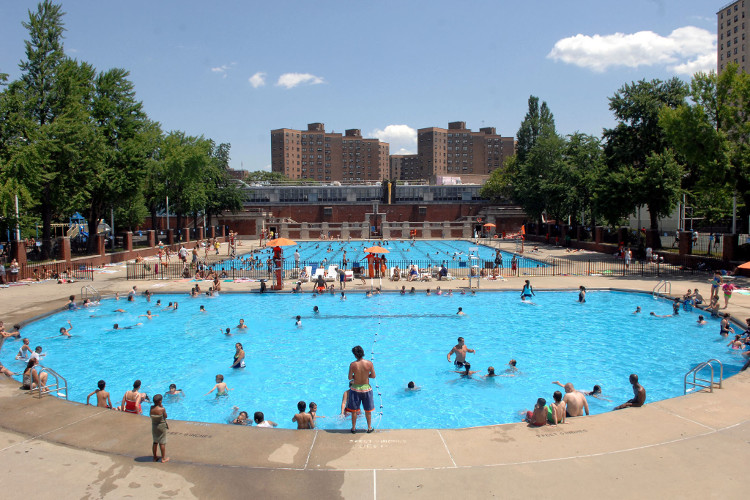Public swimming pools and scary facts
Swimming is a pleasure, a way of cooling many people, including adults and children, in the hot summer heat. However, not everyone knows about the risks as well as how to prevent yourself and your loved ones from falling into the body when swimming in public swimming pools or swimming pools.
The US Centers for Disease Control (CDC) has collaborated with the Water Quality and Health Council as well as the country's National Pool Fund to promote the annual "Healthy Swimming" program. Their goal is to raise people's awareness of the many potential risks in swimming pools as well as what you can do to get the cleanest and healthiest swimming possible.
CDC emphasizes that swimming is an extremely interesting activity, but there are many things we need to keep in mind. For example, the fact that your eyes are bloodshot after swimming is not caused by irritation with chlorine in the pool water.

Swimming is an extremely interesting activity, but there are many things we need to keep in mind.
Dr. Michael J. Beach, leader of the CDC's Healthy Water program, said: " Chlorine combines with everything it is trying to destroy from your body and it forms chemicals. The combination of chlorine and urine and sweat is the culprit that makes your eyes red. "
Mr. Beach gives another example of what can happen to you when chlorine is combined with urine and sweat in a swimming pool: coughs you have in an indoor pool.Chemical reactions trapped in closed spaces are the cause of your lung irritation, leading to coughing.
And if you think in swimming pools there is always a way to prevent sneaky urinals, such as dyes that are supposed to make the pool water change color if anyone "pees" it, then you're wrong. "The dye is likely to be a complete myth. It's just to scare people not to urinate in the pool," Beach said.
In addition, according to Mr. Beach, the outbreak of many diseases is increasing in public swimming pools, because children and adults go swimming while they have diarrhea. And this risk is more common than in the past, because a new type of parasite is now resistant to chlorine.

Do not urinate in the pool and should not think rivers or oceans are safer.
Mr. Beach explained, a person does not need to defecate into the pool to spread the disease. They may unknowingly transmit the disease only because of the microorganisms that live on their bodies, and this is why people are always encouraged to wash themselves before going into the pool. According to a CDC expert, a sick person may not be able to spread the disease, but with dozens, hundreds, even thousands of people using a swimming pool, the number of pathogens can be greatly increased. tell, enough to make an outbreak.
Fortunately, however, we always have a way to avoid all these risks. Experts recommend that you do not go to public swimming pools when you are sick (to protect others) or have open wounds (to protect yourself); Do not urinate in the pool and should not think rivers or oceans are safer.
This is because, although rivers and lakes and oceans can be very large, give the impression that tiny microorganisms cling to your body can be washed away, but if you swim next to someone who is suffering from diarrhea There is nothing to protect you. In fact, in the US state of Oregon, there has recently been a norovirus outbreak in a local lake. According to a CDC investigation, fluids can begin when someone infected with norovirus swims and diarrhea or vomits in the tank.
- Public pool contains up to 75 liters of urine
- Find out what causes eye pain when swimming
- Exposing the truth is easily tricked into swimming pool water
- Going to summer swimming is prone to infectious diseases
- Swimming pools help fishermen break world records
- The deepest swimming pool in the world
- The more the pool smells, the more dirty the chlorine is
- Leverage energy from corpses to relax
- Robot cleaning pool
- Crying with scary facts about death
- 10 beautiful floating buildings in the world
- Interesting facts about the public tail
 Green tea cleans teeth better than mouthwash?
Green tea cleans teeth better than mouthwash? Death kiss: This is why you should not let anyone kiss your baby's lips
Death kiss: This is why you should not let anyone kiss your baby's lips What is salmonellosis?
What is salmonellosis? Caution should be exercised when using aloe vera through eating and drinking
Caution should be exercised when using aloe vera through eating and drinking